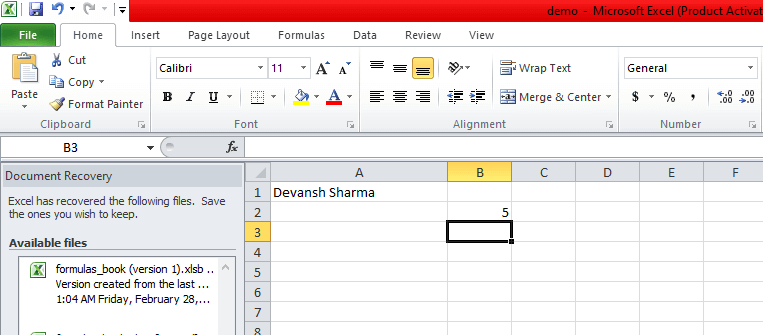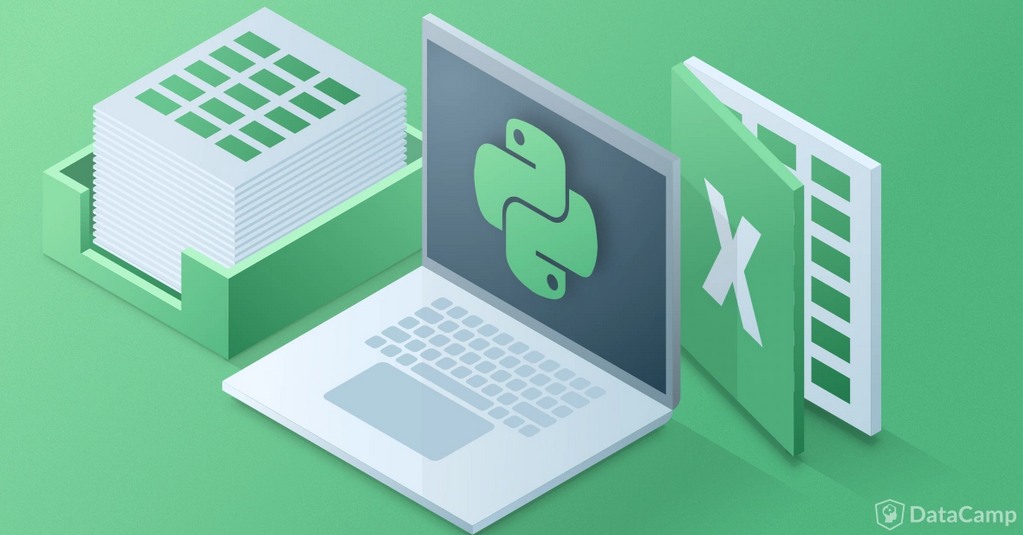First go to your python folder and create a new MS Excel file there. Name it as 'testdel.xlsx' the file will have three sheets by default. Please note that the file will be empty and hence it will not delete any of your important Excel data. When you practice with this test file, you can proceed to deleting a sheet from your actual Excel Workbook. Openpyxl package is recommended if you want to read and write.xlsx, xlsm, xltx. NumPy arrays for data analysis, consider going through our NumPy tutorial, and don’t forget to use our Golden NumPy cheat sheet! Congratulations on finishing this tutorial! I'm using openpyxl for the first time. I have to read excel file, then after manipulation, populate the result on three different excel sheets - sheetT, sheetD and sheetU. I created three sheets using openpyxl. About this Cheat Sheet This cheat sheet includes the materials I’ve covered in my Python tutorial for Beginners on YouTube. Both the YouTube tutorial and this cheat cover the core language constructs but they are not complete by any means. If you want to learn everything Python has to offer and become a Python.
Create a workbook¶
There is no need to create a file on the filesystem to get started with openpyxl.Just import the Workbook class and start work:
A workbook is always created with at least one worksheet. You can get it byusing the Workbook.active property:
Note
This is set to 0 by default. Unless you modify its value, you will alwaysget the first worksheet by using this method.
You can create new worksheets using the Workbook.create_sheet() method:
Sheets are given a name automatically when they are created.They are numbered in sequence (Sheet, Sheet1, Sheet2, …).You can change this name at any time with the Worksheet.title property:
The background color of the tab holding this title is white by default.You can change this providing an RRGGBB color code to theWorksheet.sheet_properties.tabColor attribute:
Once you gave a worksheet a name, you can get it as a key of the workbook:
You can review the names of all worksheets of the workbook with theWorkbook.sheetname attribute
You can loop through worksheets
Vpnbook download mac. You can create copies of worksheets within a single workbook:
Workbook.copy_worksheet() method:
Note
Only cells (including values, styles, hyperlinks and comments) andcertain worksheet attribues (including dimensions, format andproperties) are copied. All other workbook / worksheet attributesare not copied - e.g. Images, Charts.
You also cannot copy worksheets between workbooks. You cannot copya worksheet if the workbook is open in read-only or write-onlymode.
Playing with data¶
Accessing one cell¶
Now we know how to get a worksheet, we can start modifying cells content.Cells can be accessed directly as keys of the worksheet:
This will return the cell at A4, or create one if it does not exist yet.Values can be directly assigned:
There is also the Worksheet.cell() method.
This provides access to cells using row and column notation:
Note
When a worksheet is created in memory, it contains no cells. They arecreated when first accessed.
Warning
Because of this feature, scrolling through cells instead of accessing themdirectly will create them all in memory, even if you don’t assign them a value.
Something like
will create 100x100 cells in memory, for nothing.
Accessing many cells¶
Ranges of cells can be accessed using slicing:
Ranges of rows or columns can be obtained similarly:
You can also use the Worksheet.iter_rows() method:
Likewise the Worksheet.iter_cols() method will return columns:
Note
For performance reasons the Worksheet.iter_cols() method is not available in read-only mode.
If you need to iterate through all the rows or columns of a file, you can instead use theWorksheet.rows property:
or the Worksheet.columns property:
Note
For performance reasons the Worksheet.columns property is not available in read-only mode.
Values only¶
If you just want the values from a worksheet you can use the Worksheet.values property.This iterates over all the rows in a worksheet but returns just the cell values:
Both Worksheet.iter_rows() and Worksheet.iter_cols() cantake the values_only parameter to return just the cell’s value:
Data storage¶
Once we have a Cell, we can assign it a value:
Saving to a file¶
The simplest and safest way to save a workbook is by using theWorkbook.save() method of the Workbook object:
Warning
This operation will overwrite existing files without warning.
Note
The filename extension is not forced to be xlsx or xlsm, although you might havesome trouble opening it directly with another application if you don’tuse an official extension.
As OOXML files are basically ZIP files, you can also open it with yourfavourite ZIP archive manager.
Saving as a stream¶
If you want to save the file to a stream, e.g. when using a web applicationsuch as Pyramid, Flask or Django then you can simply provide aNamedTemporaryFile():


You can specify the attribute template=True, to save a workbookas a template:
or set this attribute to False (default), to save as a document:
Warning
You should monitor the data attributes and document extensionsfor saving documents in the document templates and vice versa,otherwise the result table engine can not open the document.
Note

The following will fail:
Loading from a file¶
The same way as writing, you can use the openpyxl.load_workbook() toopen an existing workbook:
This ends the tutorial for now, you can proceed to the Simple usage section
Opening Excel Documents with OpenPyXL¶
Getting Sheets from the Workbook¶
Getting Cells from the Sheets¶
Specifying a column by letter can be tricky to program, especially because after column Z, the columns start by using two letters: AA, AB, AC, and so on. As an alternative, you can also get a cell using the sheet’s cell() method and passing integers for its row and column keyword arguments. The first row or column integer is 1, not 0.<Cell Sheet1.B1>
Converting Between Column Letters and Numbers¶
Getting Rows and Columns from the Sheets¶
You can slice Worksheet objects to get all the Cell objects in a row, column, or rectangular area of the spreadsheet. Then you can loop over all the cells in the slice.
Creating and Saving Excel Documents¶

Creating and Removing Sheets¶
The create_sheet() method returns a new Worksheet object named SheetX, which by default is set to be the last sheet in the workbook. Optionally, the index and name of the new sheet can be specified with the index and title keyword arguments.
Openpyxl Copy Sheet
Writing Values to Cells¶
Setting the Font Style of Cells¶

Font Objects¶
Keyword Arguments for Font
| Keyword argument | data type | Description |
| name | string | The font name, such as ‘Calibri’ or ‘Times New Roman’ |
| size | integer | The point size |
| bold | boolean | True, for bold font |
| italic | boolean | True, for italic font |
Openpyxl Sheet Max Row
Formulas¶
Openpyxl Cheat Sheet 2020
This will store =SUM(B1:B8) as the value in cell B9. This sets the B9 cell to a formula that calculates the sum of values in cells B1 to B8.
Setting Row Height and Column Width¶
